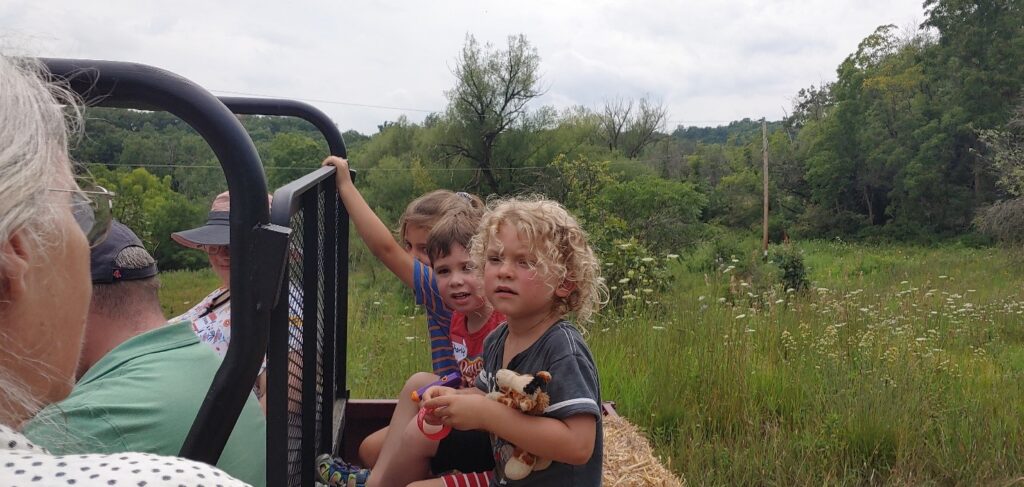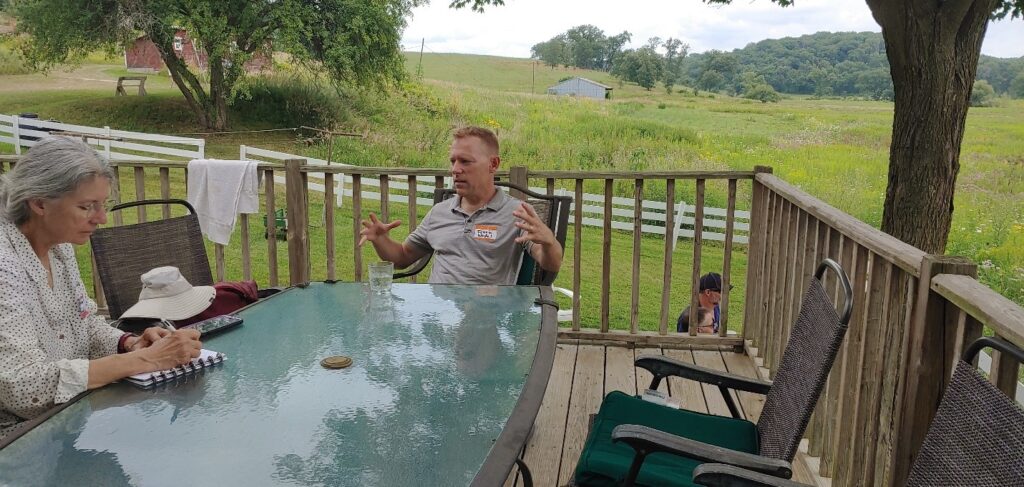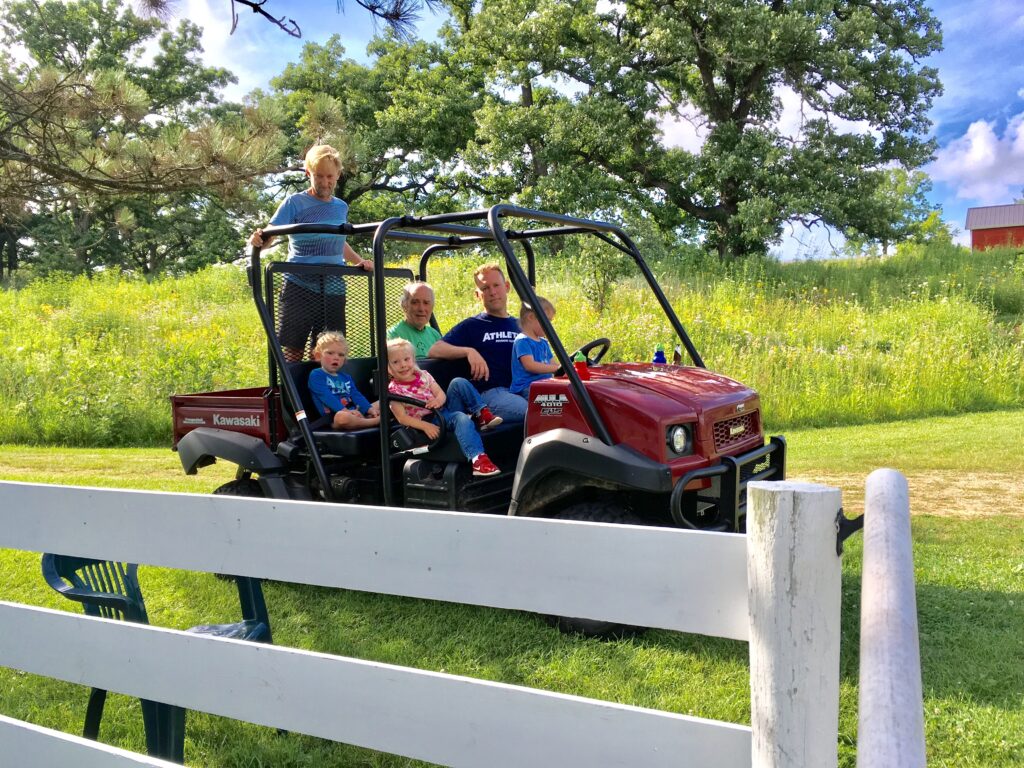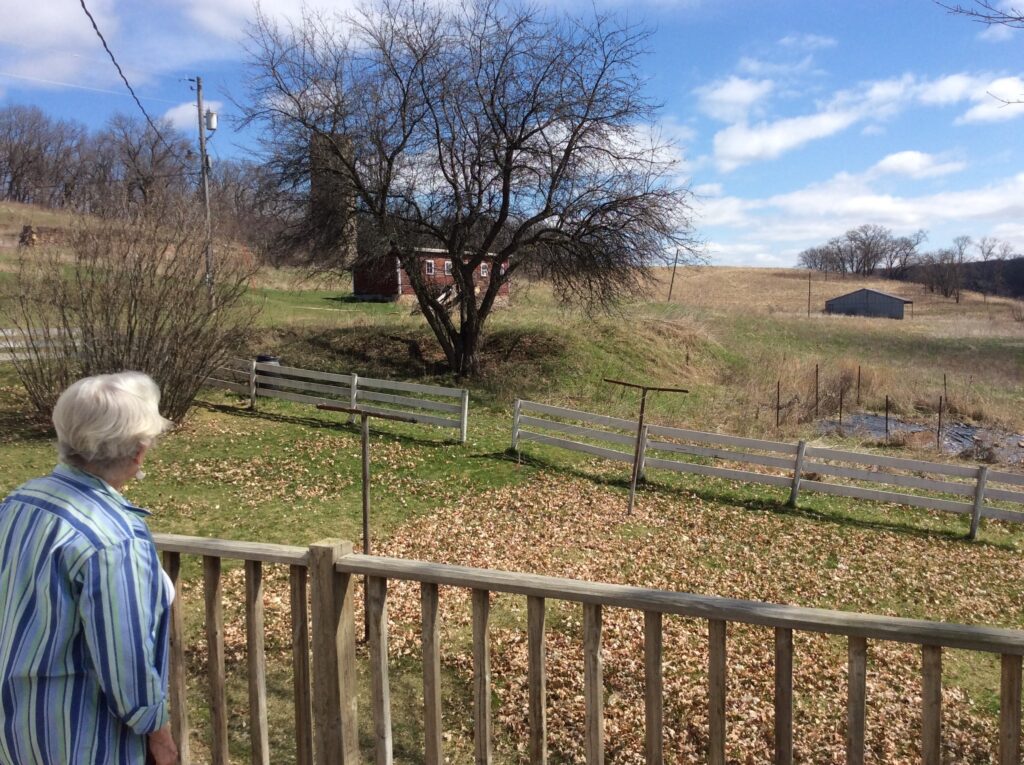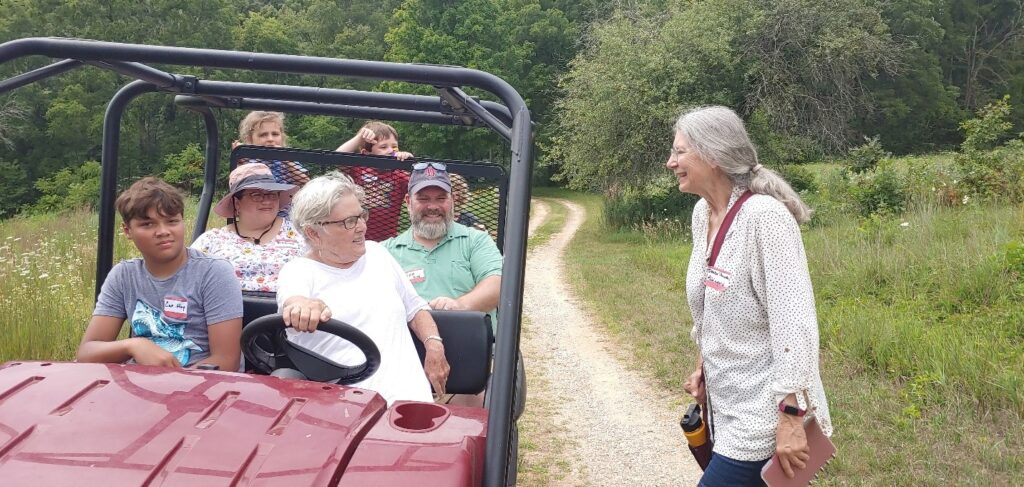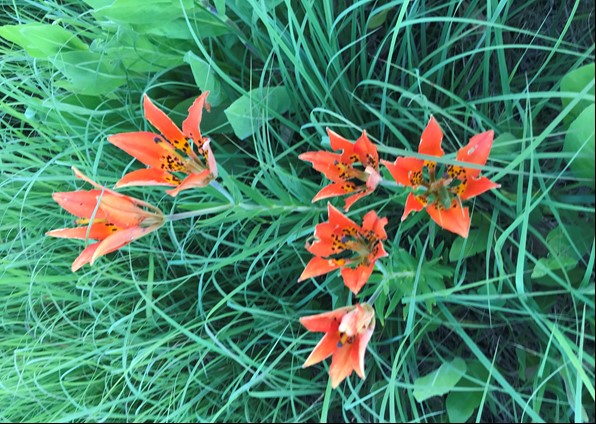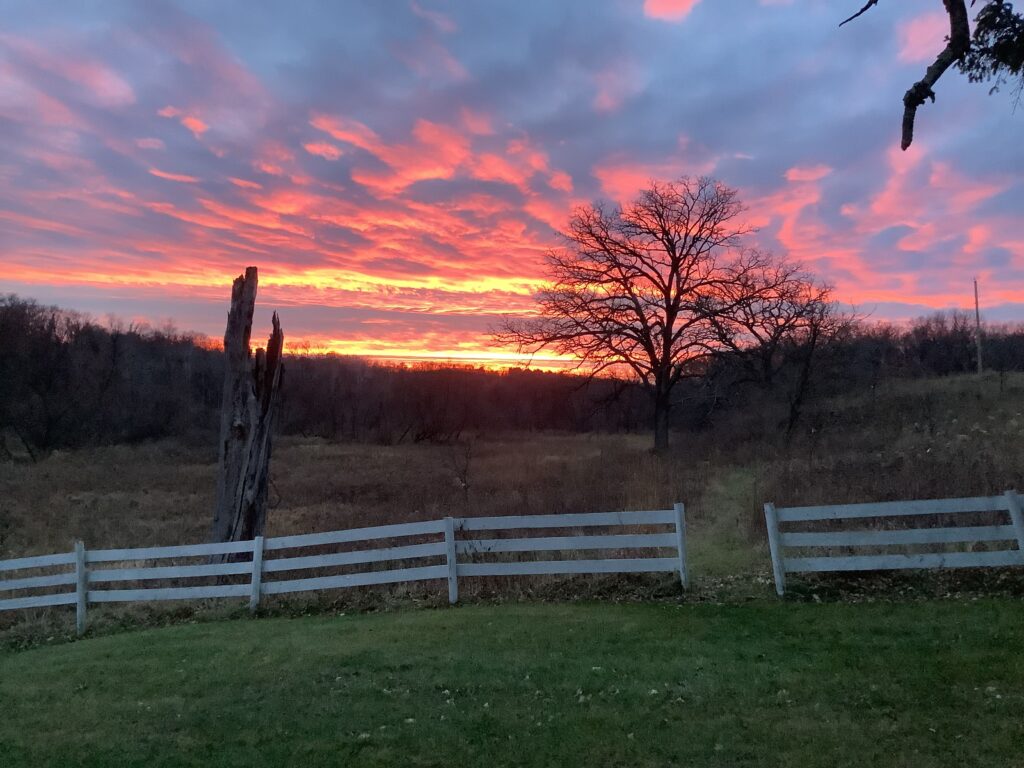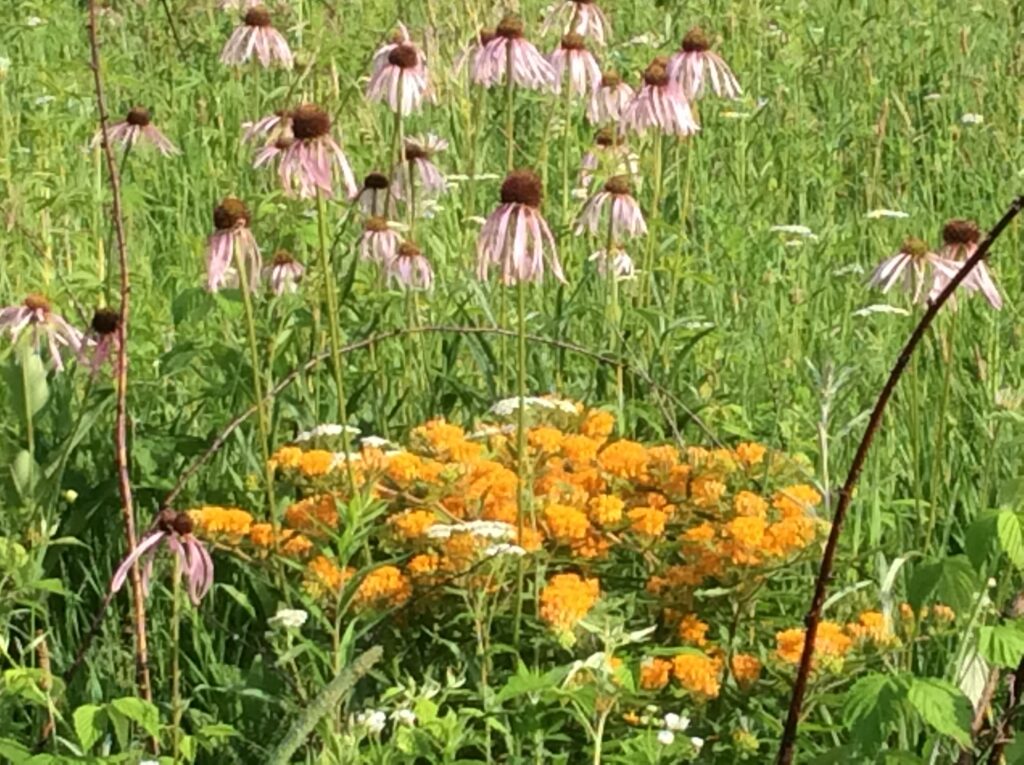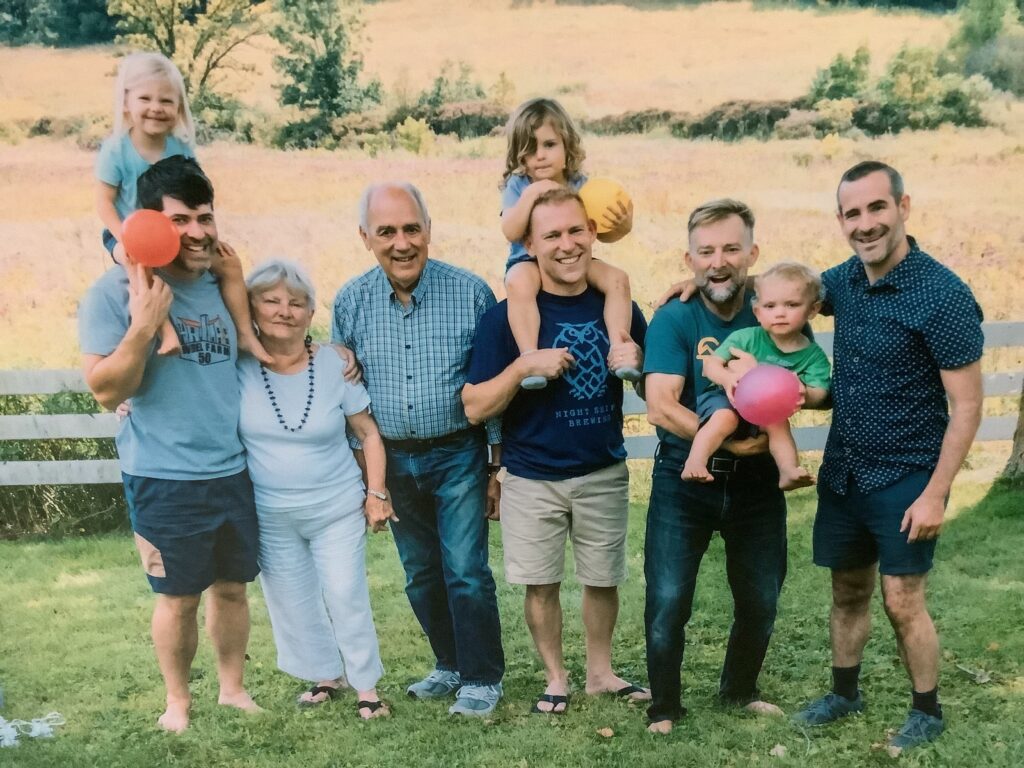
50 Years of Stewardship
About 50 years ago, Tom Wedel and his wife Eva were living in Crystal Lake, Illinois, north of Chicago. They knew they wanted to buy some land, but were not sure where to look.
Tom was a commercial pilot. “I was flying one day,” he remembers, “when another pilot was catching a ride and chatting with the captain. I heard the words New Glarus, hills, farm, and pretty, all in the same sentence.”
A New Glarus realtor showed them a property with seven acres of woods — the rest was corn. That was not what they were looking for, but at the next stop, while Tom was out of the car opening the gate that opened into a valley dotted with cows and ringed with trees, Eva told the realtor, “We’ll buy this one.”
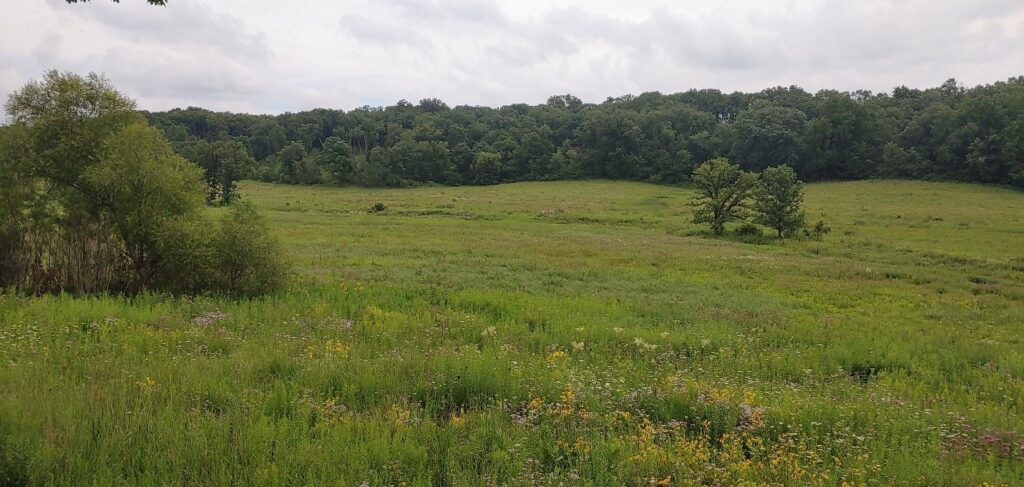 Planted upland prairie in the foreground and also along the wood way back are connected by an expansive and very high-quality wetland complex running the length of the property.
Planted upland prairie in the foreground and also along the wood way back are connected by an expansive and very high-quality wetland complex running the length of the property.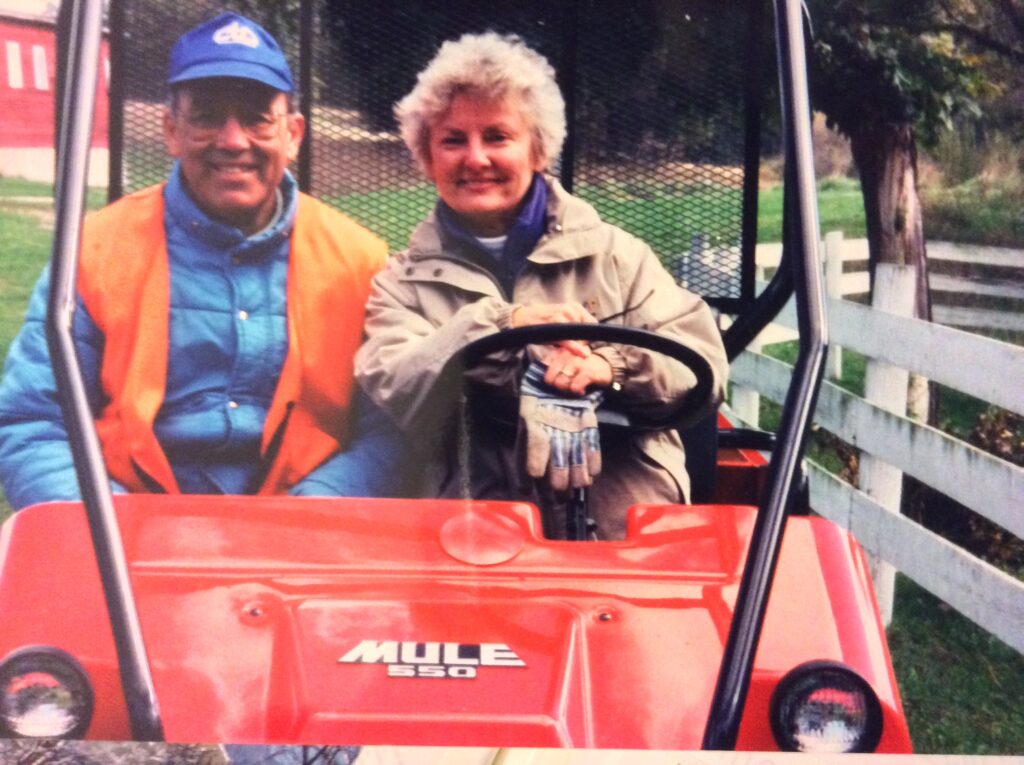
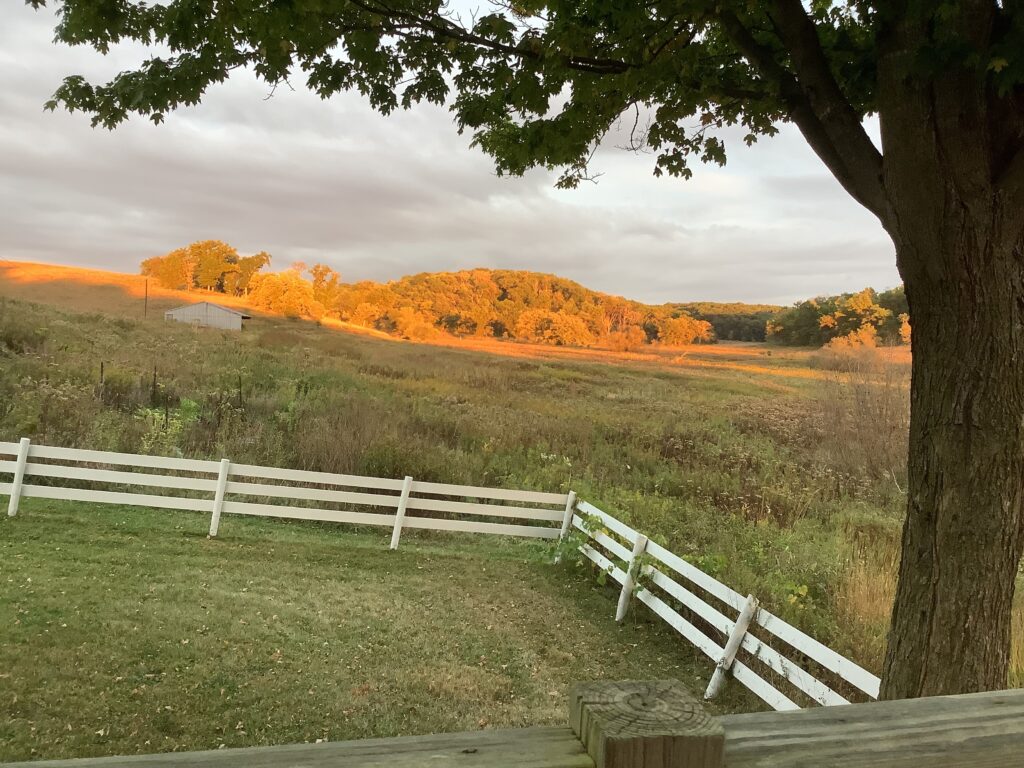
“It was very poor farmland because the soil was all rock and sand with a giant wetland in the middle that had cows on it,” says their son Andy.
For a time the farmer continued to live in the house and farm the land while the Wedels drove up from Illinois as often as they could. “Along with our two little boys and German Shepard, we camped down by the spring, with the cows nudging on the tent during the night,” Eva remembers.
Today, an old fallen oak arches over the source of the spring, one of seven year-round springs on the land. “When I was a little kid, it was a giant tree with a spring coming out of its roots,” Andy remembers. “It was magical to come here, and it became a family obsession. My brother, Davin, and his family live in Boston. My family lives in Tucson. We are three time zones apart, but we come here a lot because it is so incredibly emotionally, scientifically, and spiritually satisfying to do this kind of work and discover another butterfly, bird, or plant that is in trouble and give it a hand.”
In 1987, the farmer decided to stop cropping, and the Wedels explored the Conservation Reserve Program (CRP). Andy, recalls, “One of the CRP options was warm-season grasses. We asked, ‘What’s that?’ That was the impetus to start prairie and ecological restoration.”
“It was a slow process,” says Tom. “We knew nothing about it. When you say ‘savanna,’ that was a town in Georgia. We learned as we went along.”
“We have loved being here and doing the things that need to be done,” added Eva. “To this day, one of the most common things we say is, ‘we need to take care of that.’”
With CRP assistance, they could afford to plant their first 18 acres of prairie grasses. With the few dollars they had left over, they bought some prairie flower seed. “We were so excited to find a cup plant growing naturally,” says Tom. “Over time, we have found a number of old remnant areas on the farm.”
Through the years, the Wedels have worked with many agencies who have helped them with both technical expertise and physical support, as they learned everything they could and balanced their growing experience with knowledgeable advice.
“Since around 2004, we have been helping the Wedels restore grasslands and remove invasive trees along the trout stream that bisects their grassland,” says Mike Engle, private land biologist with the U.S. Fish and Wildlife Service. “The stream was a big project for us, and we used what is commonly known as stimulus money from the American Recovery and Reinvestment Act to help fund it. Sometimes people don’t think about ecological restoration as being part of a sustainable, healthy economy. But almost all the contractors we hire are small businesses, so it does make a difference to the local economy.”
“Even though their grandson is named Aldo, I don’t think they had Leopold-esque intentions when they bought the farm,” says Darcy Kind, private lands biologist with the Wisconsin DNR Bureau of Natural Heritage Conservation. “Now there are rare plants growing where it was tilled and farmed. They have partnered with different agencies, which is so important for both land owners and agencies, each with their own focus. When ecologists come together, it is a brain dump of conservation information, and the land owner has to sort it out. Every property has its own history. It’s challenging but also exciting for both a landowner and restoration ecologist because you are taking all of that into consideration. The Wedels have such a strong interest in managing the property as a whole.”
David Cordray of Environmental Returns LLC has worked with the family since 2008. “The Wedels have a committed land ethic,” he says. “They sweat the details and make sure things get done in the most timely manner to the best of their ability. Their restoration and work parties are all full of memories connected to the land, and it shows. One of their wetlands is such a good, intact wetland that the DNR has judged it as State Natural Area quality.”
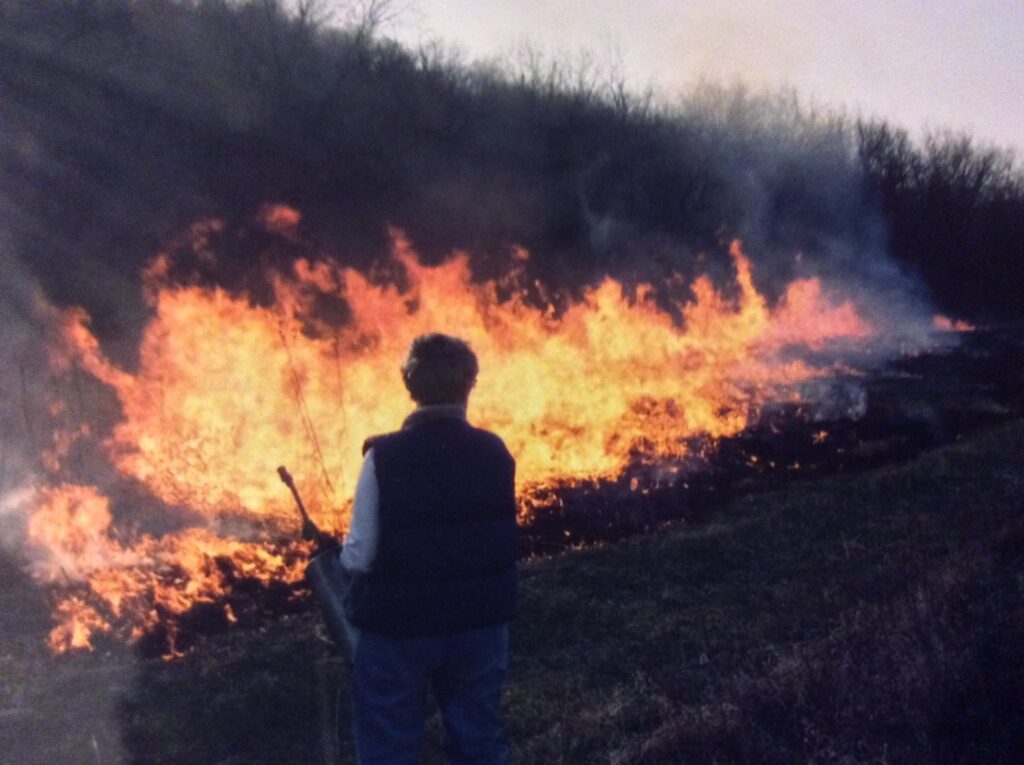
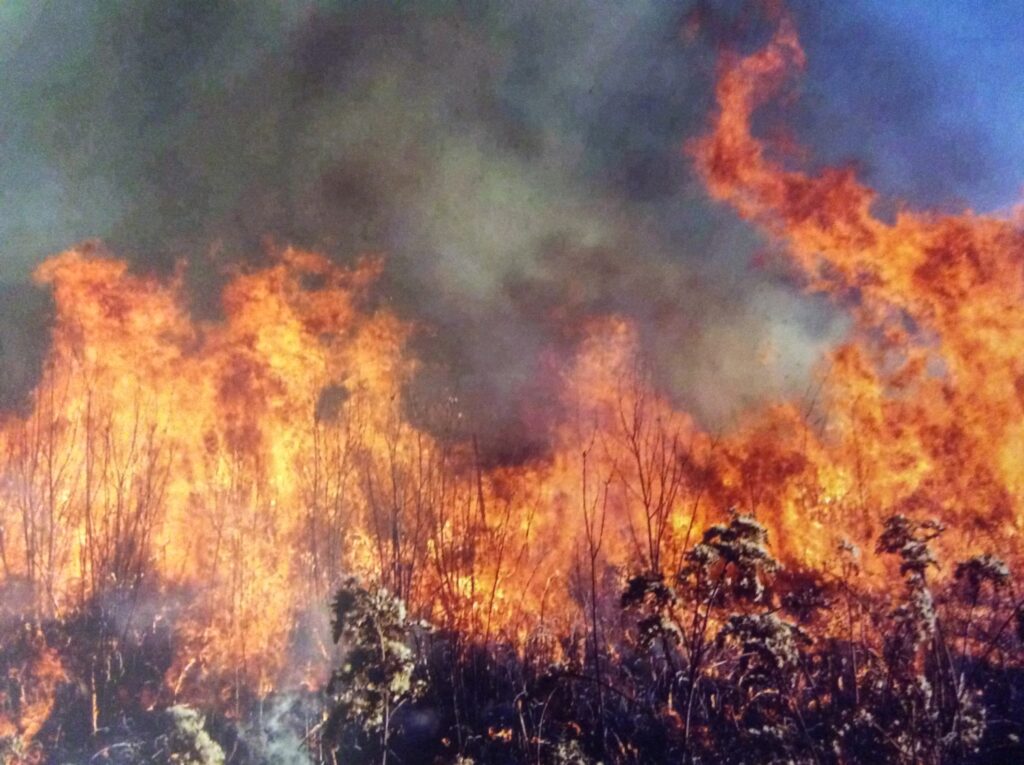
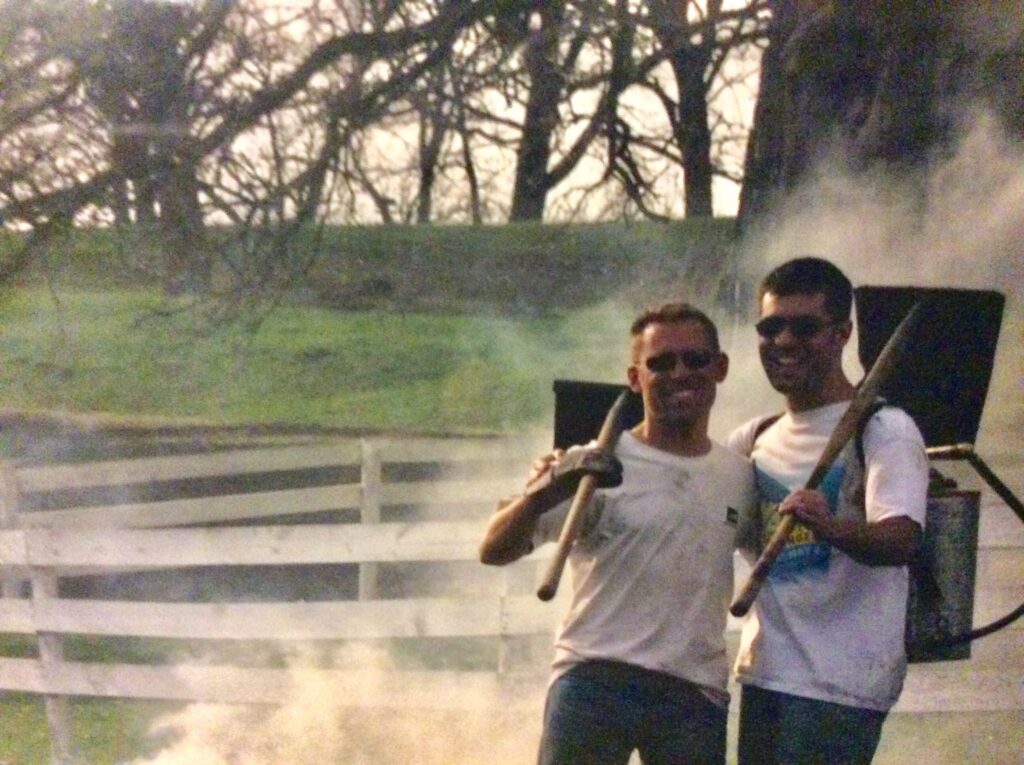 Davin Wedel with husband David Wedel help conduct a prescribed burn of the prairie
Davin Wedel with husband David Wedel help conduct a prescribed burn of the prairie
Andy reached out to Doug Taron, chief curator of the Chicago Academy of Sciences and its Nature Museum to answer some butterfly ID questions. In return, the Wedels have allowed him to collect a founder stock of the Baltimore Checkerspot butterfly, a beautiful butterfly about half the size of a monarch with red and yellow spots on a velvety-black background, for the Bluff Spring Fen in Elgin, IL, which Taron helps manage. The butterflies were wiped out from Bluff Spring Fen in 2012 by drought and a fire. “The Wedels have a fine butterfly fauna, including Aphrodite fritillary and long dash skipper — both interesting because they used to fly in Illinois, and they seem to be retreating northward in the face of a warming climate,” says Taron.
Andy has focused on identifying, cataloging, and restoring rare plants and animals on the property. He knows every Latin name and has even discovered a small area where two different blazing stars have formed a rare hybrid.
Davin has focused on figuring out how to balance all the different priorities they have learned to care about. “I’m trying to find the best path forward for the insects, trees, grasses, and forbs to thrive while maintaining the infrastructure,” says Davin. “Our family is part of that balance. My dad and I spend a lot of time on trails — making sure there is a way to get out there to see what needs to be taken care of.”
“When you take on something like this, it gives you purpose,” Davin continues. “The land is where we take our vacations. We get to be there, live there, and get real projects done. We want to make sure we spend good amounts of time every year so the kids learn from us as we are doing our projects and get imprinted on the farm.”
 David Wedel (Son-in-law) with daughter Lucy on his shoulders, Eva Wedel (Mom), Tom Wedel (Dad), Davin Wedel (Son) with Stella on his shoulders, Andy Wedel (Son) holding son Aldo, and Adam Ussishkin (Son-in-law)(L to R).
David Wedel (Son-in-law) with daughter Lucy on his shoulders, Eva Wedel (Mom), Tom Wedel (Dad), Davin Wedel (Son) with Stella on his shoulders, Andy Wedel (Son) holding son Aldo, and Adam Ussishkin (Son-in-law)(L to R). Tom and Eva Wedel with sons Davin and Andy
Tom and Eva Wedel with sons Davin and Andy
To safeguard the future of the land, the Wedel family has formed a 501(c)(3) Foundation which will protect 350 acres. Tom, Eva, and their sons are officers, and the foundation’s purpose is to maintain their land for the sake of species of special concern, both flora and fauna. The other 50 acres, which includes the house and outbuildings are in Eva’s name. “That will go to our children, and they will use it wisely.” she says.
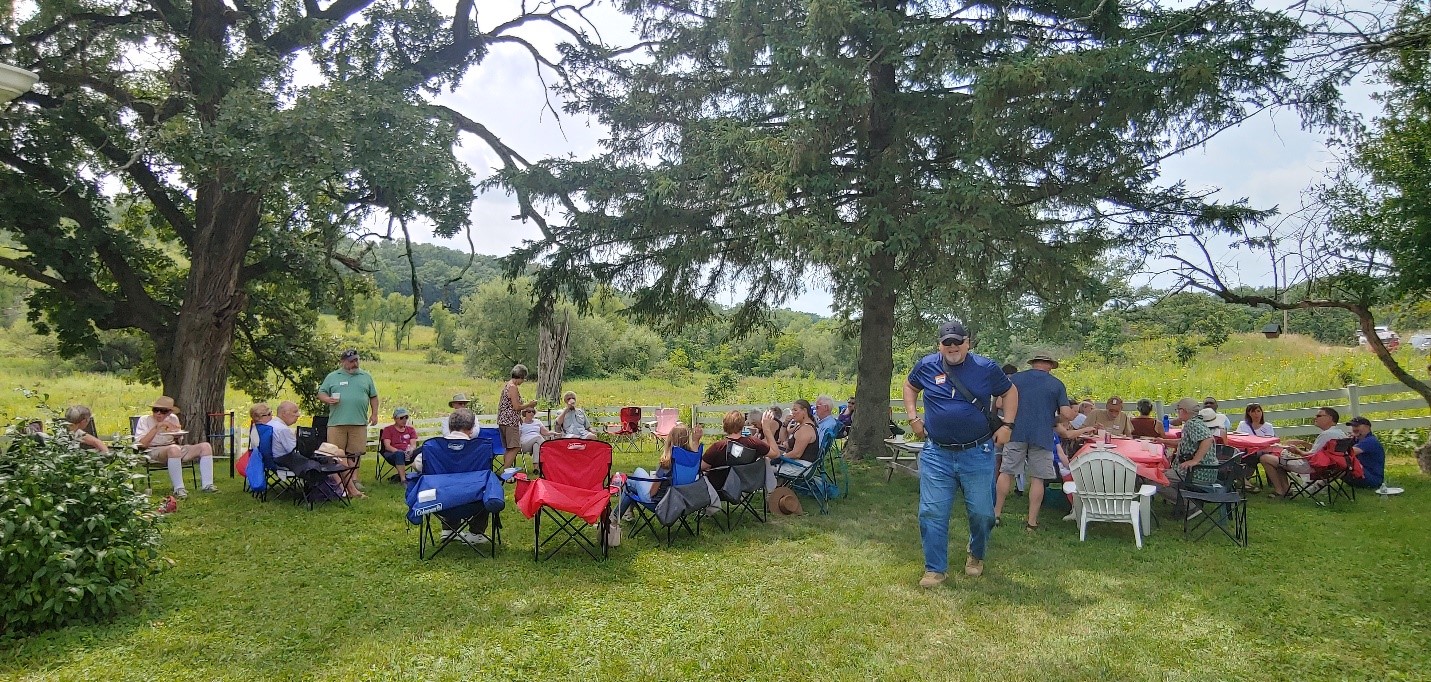 Family, neighbors, and friends gathered to help celebrate the Wedel’s 50 years of owning and caring for their property. Those in attendance enjoyed food, fellowship, tours, and live music.
Family, neighbors, and friends gathered to help celebrate the Wedel’s 50 years of owning and caring for their property. Those in attendance enjoyed food, fellowship, tours, and live music.
This August, on a particularly warm Saturday, the Wedel family celebrated 50 years of stewardship with friends and neighbors who have watched and helped with the transformation of a failing farm into native wet prairie, oak forest, and savanna habitats. A row of photos posted on the fence for the occasion showed Andy and Davin growing up on the farm. The latest family photos include images of their own children, as they nurture a third generation committed to preservation of their treasured land.


